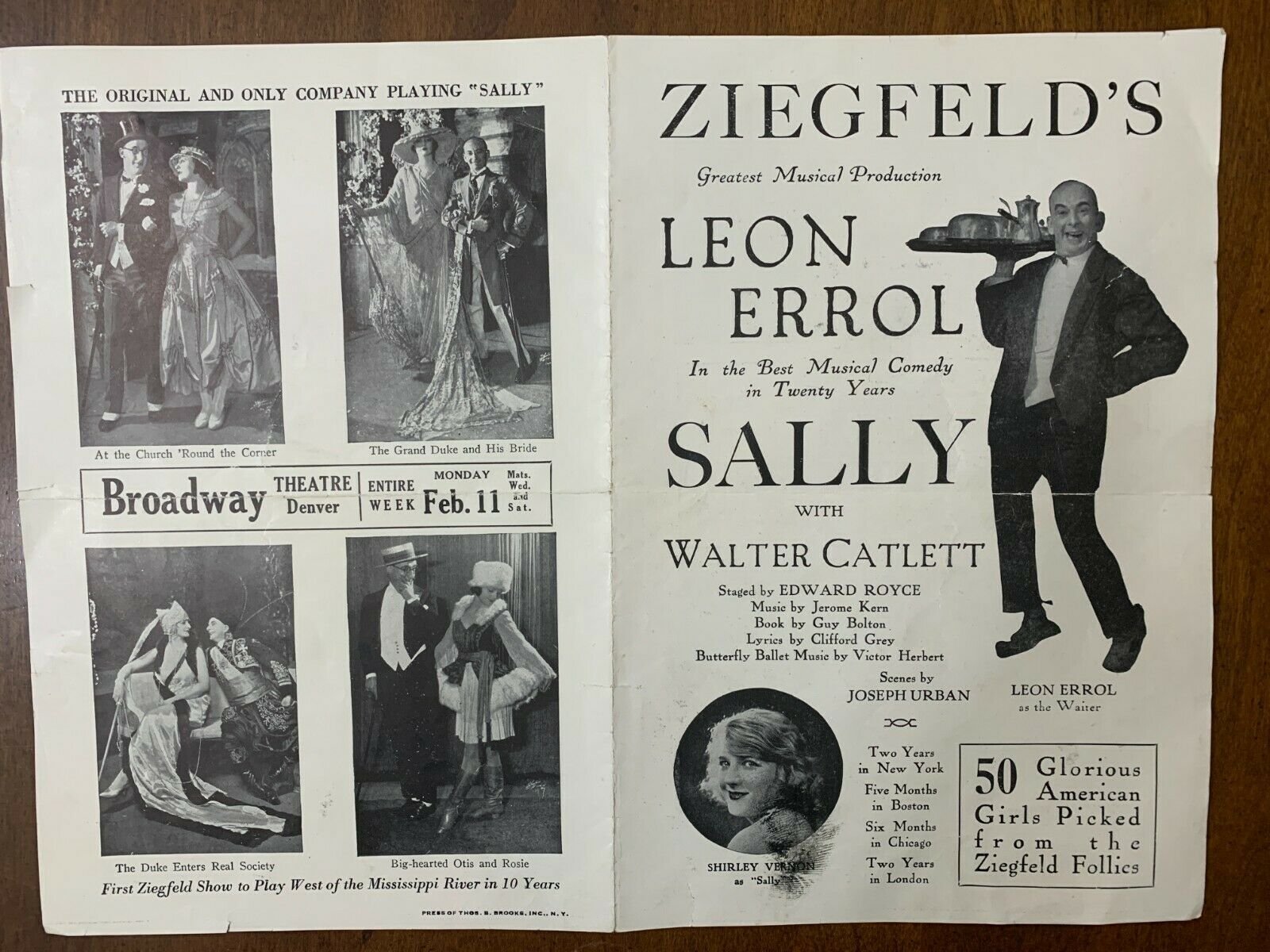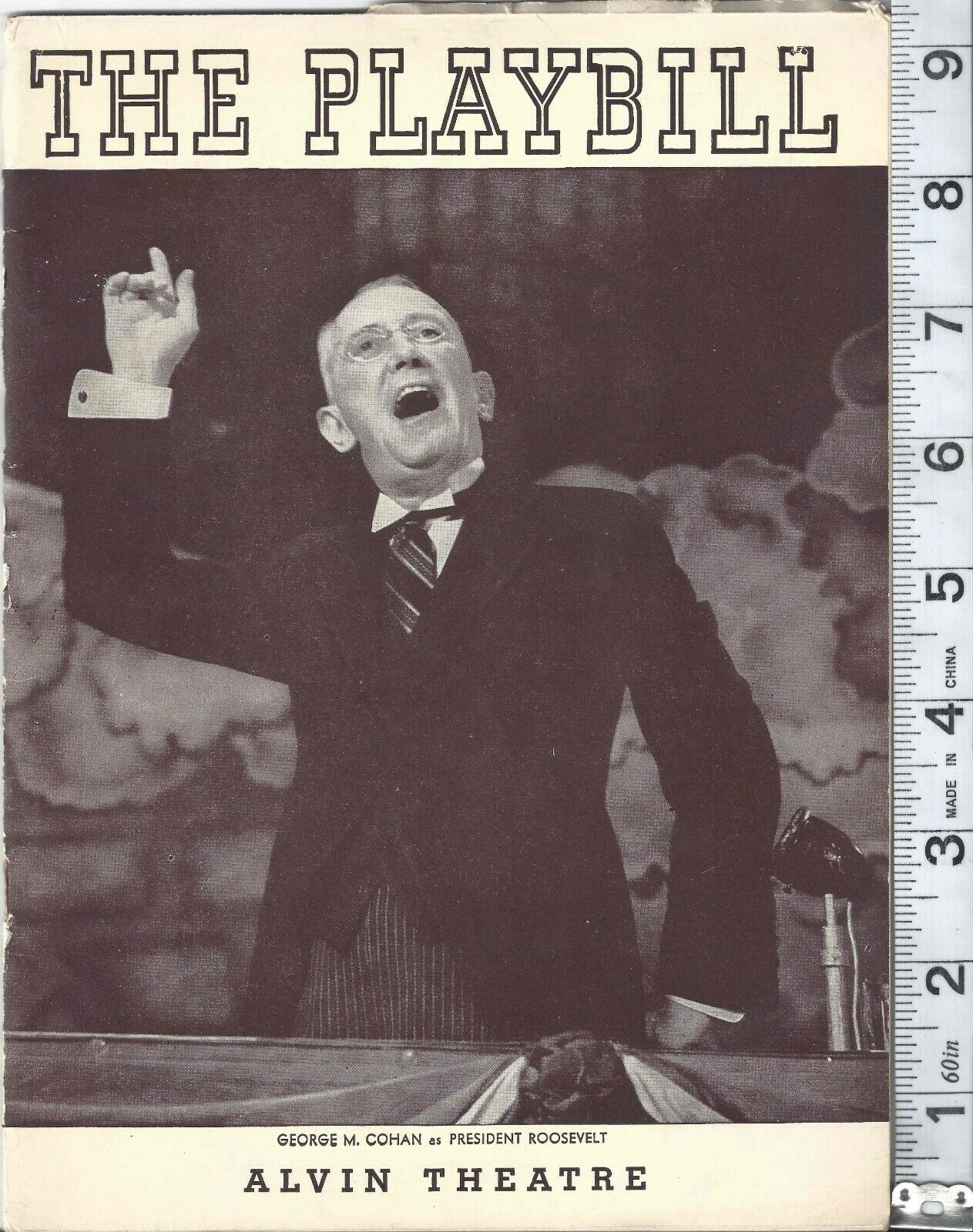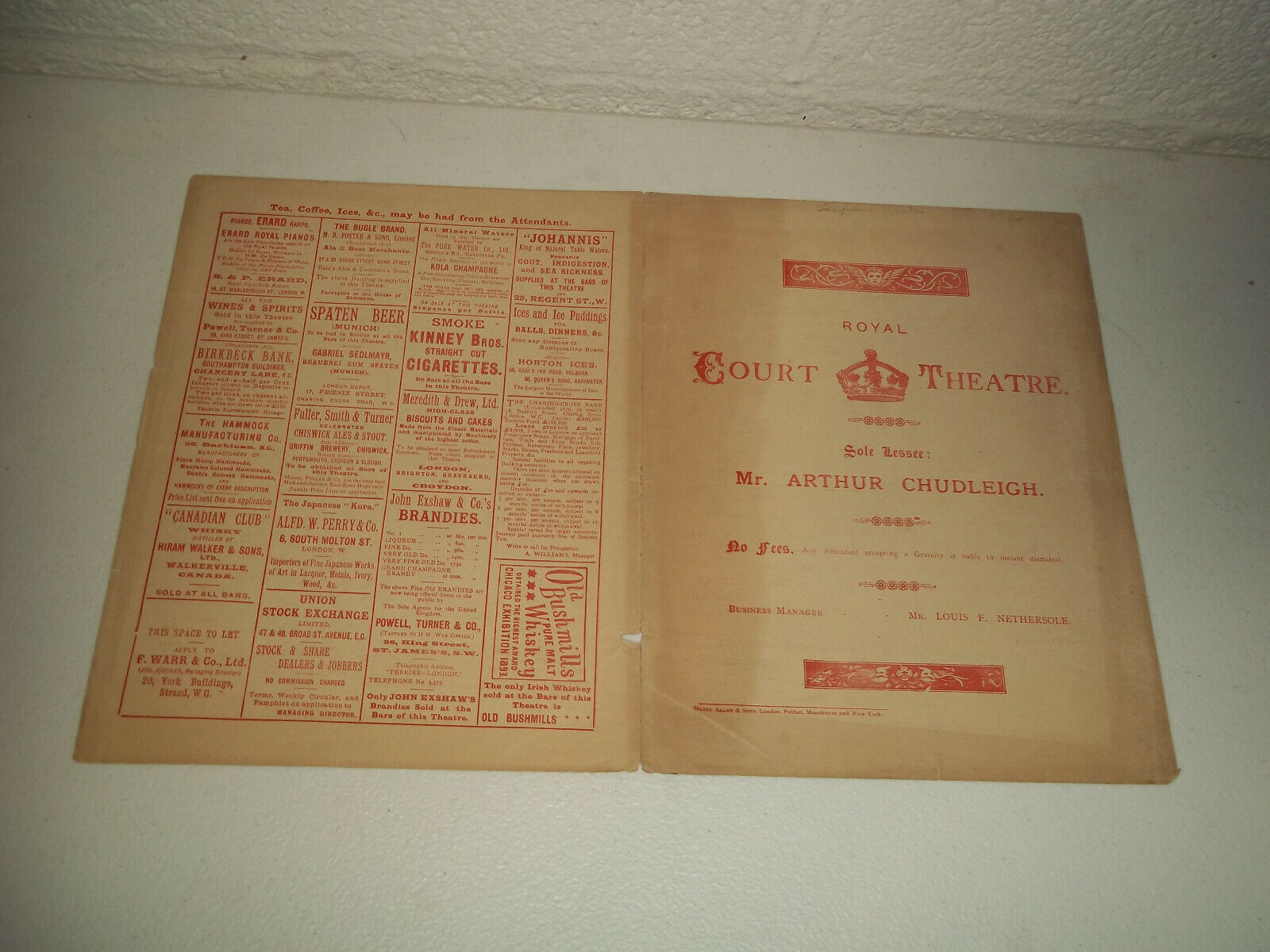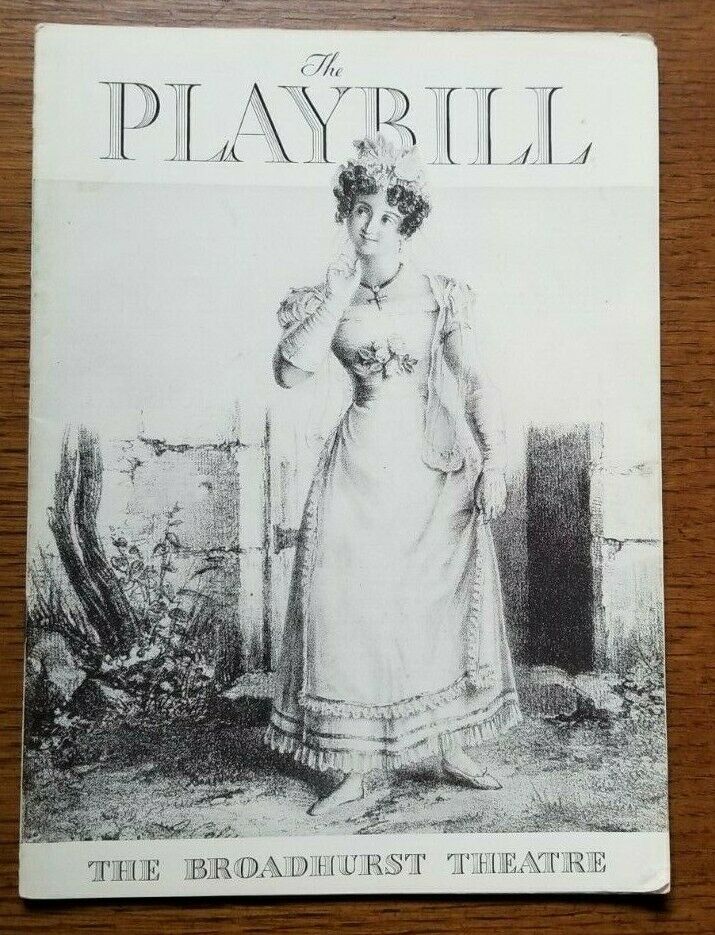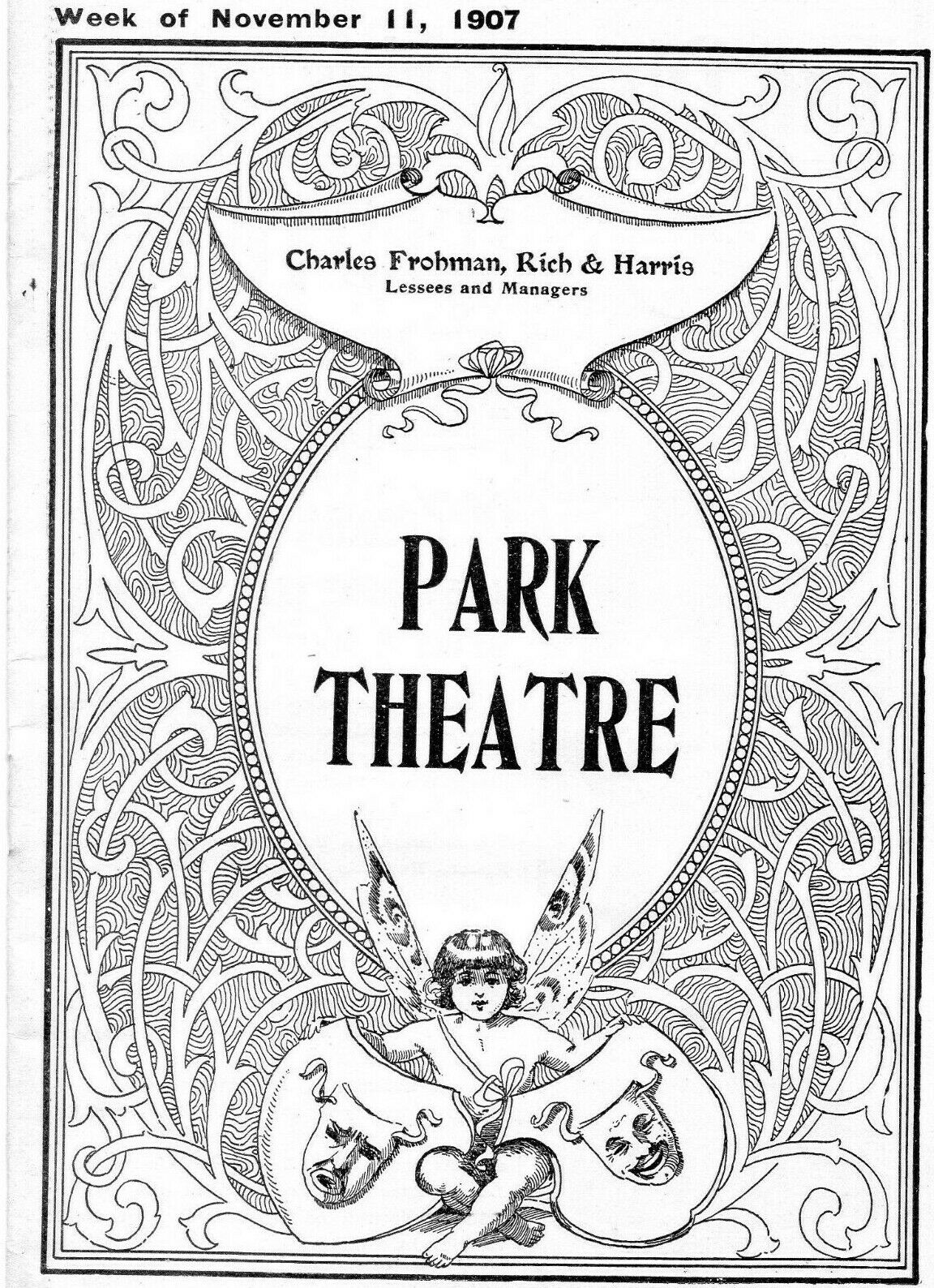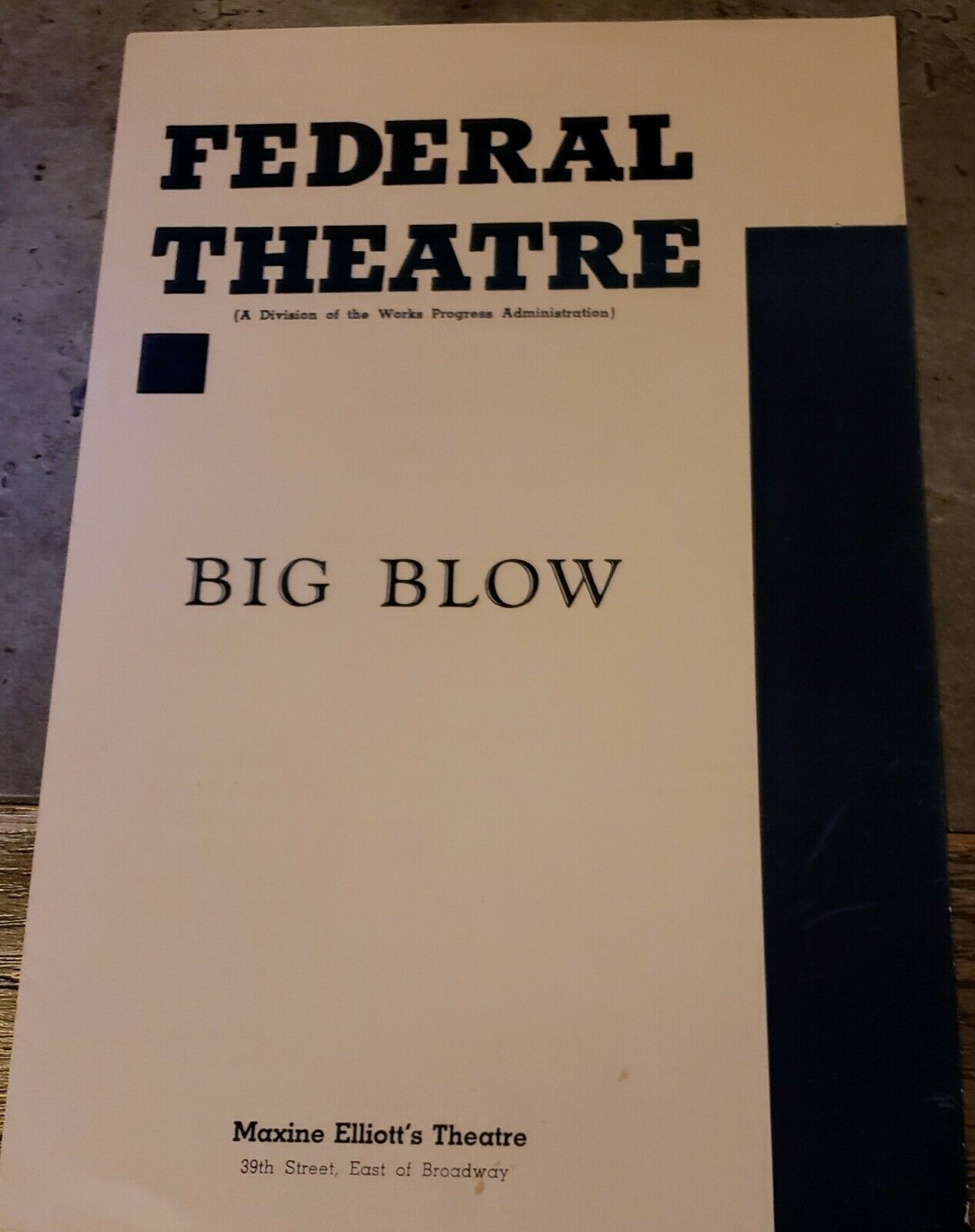-40%
*WIZARD OF OZ: MARGARET HAMILTON WICKED WITCH RARE 1932 BROADWAY DEBUT PROGRAM*
$ 26.39
- Description
- Size Guide
Description
She's famous as the Wicked Witch of the West in the 1939 MGM film The Wizard of Oz with Judy Garland, Frank Morgan, Ray Bolger, Jack Haley, and Bert Lahr. An extraordinary original October 1932 program for Margaret Hamilton's Broadway debut in Another Language. Twenty four pages. Dimensions nine and a half by seven inches. Light wear otherwise good. See the story of Margaret Hamilton and the Wizard of Oz below.Buyer pays USPS insured shipping. Reduced postage for buyers of multiple items. Credit cards accepted with Paypal. Inquiries always welcome. Please visit my other eBay auctions and Buy It Now items for more early theatre, opera and historical autographs, photographs, broadsides and programs and great singer, actor and actress cabinet photos and CDV's.
From Wikipedia:
Margaret Brainard Hamilton
(December 9, 1902 – May 16, 1985) was an American film actress best known for her portrayal of the
Wicked Witch of the West
, and her Kansas counterpart Almira Gulch, in
Metro-Goldwyn-Mayer
's film
The Wizard of Oz
(1939).
[1]
A former schoolteacher, she worked as a
character actress
in films for seven years before she was offered the role that defined her public image. In later years, Hamilton made frequent cameo appearances on television
sitcoms
and
commercials
. She also gained recognition for her work as an advocate of causes designed to benefit children and animals and retained a lifelong commitment to public education.
Hamilton was born in
Cleveland
, the youngest of four children of Walter J. Hamilton and his wife, Mary Jane (née Adams; known by her nickname, Jennie). She attended
Hathaway Brown School
while the school was at 1945 East 93rd Street in Cleveland. Drawn to the theater at an early age, Hamilton made her amateur stage debut in 1923.
[
citation needed
]
Hamilton also practiced her craft doing children's theater while she was a
Junior League
of Cleveland member. Hamilton made her debut as a "professional entertainer" on December 9, 1929, in a "program of 'heart rending songs'" in the Charles S. Brooks Theater at the
Cleveland Play House
.
[2]
She later moved to
Painesville, Ohio
.
[
citation needed
]
Before she turned to acting exclusively, her parents insisted she attend
Wheelock College
in
Boston
, which she did, later becoming a kindergarten teacher.
[3]
Film career
[
edit
]
Hamilton made her screen debut in 1933 in
Another Language
. She went on to appear in
These Three
(1936),
Saratoga
,
You Only Live Once
,
When's Your Birthday?
,
Nothing Sacred
(all 1937),
The Adventures of Tom Sawyer
(1938),
My Little Chickadee
(with
W. C. Fields
, 1940), and
The Sin of Harold Diddlebock
(with
Harold Lloyd
, 1947). She strove to work as much as possible to support herself and her son; she never put herself under contract to any one studio and priced her services at ,000 (,000 with inflation
[4]
) a week.
[5]
Hamilton costarred opposite
Buster Keaton
and
Richard Cromwell
in a 1940s spoof of the long-running local
melodrama
The Drunkard
, titled
The Villain Still Pursued Her
. Later in the decade, she was in a little-known
film noir
, titled
Bungalow 13
(1948), in which she again costarred opposite Cromwell. Her crisp voice with rapid but clear enunciation was another trademark. She appeared regularly in supporting roles in films until the early 1950s and sporadically thereafter. Opposite
Bud Abbott
and
Lou Costello
, she played a heavily made-up witch in
Comin' Round the Mountain
, where her character and Costello go toe-to-toe with voodoo dolls made of each other. She appeared, uncredited, in
Joseph L. Mankiewicz
's
People Will Talk
(1951) as Sarah Pickett. In 1960, producer/director
William Castle
cast Hamilton as a housekeeper in his
13 Ghosts
horror film, in which 12-year-old lead
Charles Herbert
's character taunts her about being a witch, including the final scene, in which she is holding a broom in her hand.
The Wizard of Oz
[
edit
]
Hamilton as the Wicked Witch of the West with
Judy Garland
as
Dorothy Gale
in
The Wizard of Oz
(1939)
In 1939, Hamilton played the role of the
Wicked Witch of the West
, opposite
Judy Garland
's
Dorothy Gale
in
The Wizard of Oz
, creating, not only her most famous role, but also one of the screen's most memorable villains. Hamilton was cast after
Gale Sondergaard
, who was first considered for the role, albeit as a more glamorous witch with a musical scene, declined the role when the decision was made that the witch should appear ugly.
[6]
On December 23, 1938, she suffered a second-degree burn on her face and a third-degree burn on her hand during a second take of her fiery exit from
Munchkinland
in which the trap door's drop was delayed to eliminate the brief glimpse of it seen in the final edit. Hamilton had to recuperate in a hospital and at home for six weeks after the accident before returning to the set to complete her work on the film and refused to have anything further to do with fire for the rest of the filming. After she recuperated, she said, "I won't sue, because I know how this business works, and I would never work again. I will return to work on one condition – no more fireworks!" Garland visited Hamilton while the later recuperated at home looking after her son.
[7]
Studio executives cut some of Hamilton's more frightening scenes, worrying they would frighten children too much. Later in life, she would comment on the role of the witch in a light-hearted fashion. During one interview, she joked:
I was in need of money at the time, I had done about six pictures for MGM at the time, and my agent called. I said, 'Yes?' and he said 'Maggie, they want you to play a part on the Wizard.' I said to myself, 'Oh, boy,
The Wizard of Oz
! That has been my favorite book since I was four.' And I asked him what part, and he said, 'The Witch,' and I said, 'The Witch?!' and he said, 'What else?'
[8]
Hamilton's stand-in and stunt double for the Witch,
Betty Danko
, also suffered an on-set accident on February 11, 1939. Danko made the fiery entrance to Munchkinland, not Hamilton. She was severely burned during the "Surrender Dorothy!" skywriting sequence at the
Emerald City
. Danko sat on a smoking pipe configured to look like the Witch's broomstick. The pipe exploded on the third take of the scene. She spent 11 days in the hospital and her legs were permanently scarred. The studio hired a new stunt double, Aline Goodwin, to finish the broomstick-riding scene for Danko.
[9]
When asked about her experiences on the set of
The Wizard of Oz
, Hamilton said her biggest fear was that her monstrous film role would give children the wrong idea of who she really was. In reality, she cared deeply about children, frequently giving to charitable organizations. She often remarked about children coming up to her and asking her why she had been so mean to Dorothy. She appeared on an episode of
Mister Rogers' Neighborhood
in 1975 where she explained to children she was only playing a role and showed how putting on a costume "transformed" her into the witch.
[10]
She also made personal appearances, and Hamilton described the children's usual reaction to her portrayal of the Witch:
Almost always they want me to laugh like the Witch. And sometimes when I go to schools, if we're in an auditorium, I'll do it. And there's always a funny reaction, like 'Ye gods, they wish they hadn't asked.' They're scared. They're really scared for a second. Even adolescents. I guess for a minute they get the feeling they got when they watched the picture. They like to hear it but they 'don't' like to hear it. And then they go, 'Ohhhhhhhhhh ... !' The picture made a terrible impression of some kind on them, sometimes a ghastly impression, but most of them got over it, I guess ... because when I talk like the Witch, and when I laugh, there is a hesitation and then they clap. They're clapping at hearing the sound again.
[11]
Hamilton played two credited roles in the famous film: Almira Gulch and the Wicked Witch of the West. Hamilton also appears as an unidentified flying witch during the tornado scene, which may have been the Wicked Witch of the West or her sister, the Wicked Witch of the East. If the latter case, this would be Hamilton's third but uncredited role. Only co-star
Frank Morgan
played more roles (five) in the film. Hamilton and Morgan never share any scenes in
Oz
. However, in
By Your Leave
(1934), she plays his housekeeper, and in
Saratoga
(1937), she has a colloquy with Morgan regarding a cosmetic product he invented (with side glances and eye rolls by Morgan as to its effect on her "beauty"). Hamilton's line from
The Wizard of Oz
– "I'll get you, my pretty, and your little dog, too!" – was ranked 99th in the 2005
American Film Institute
survey of
the most memorable movie quotes
. Her son, interviewed for the 2005 DVD edition of the film, commented that Hamilton enjoyed the line so much, she sometimes used it in her real life.
A few months after filming
Oz
, she appeared in
Babes in Arms
(1939) as Jeff Steele's aunt, Martha, a society do-gooder who made it her goal to send the gang of child actors, led by
Mickey Rooney
and
Judy Garland
, to a work farm. In 1945, she played the domineering sister of
Oz
co-star
Jack Haley
in
George White's Scandals
, comically trying to prevent him from marrying actress
Joan Davis
, even going so far as to throw a hatchet at her. Hamilton and
Ray Bolger
were cast members in the 1966 fantasy film
The Daydreamer
, a collection of stories by
Hans Christian Andersen
. A few years later, they were reunited on Broadway for the short-lived musical
Come Summer
.
Radio, television, and stage career
[
edit
]
Margaret Hamilton, Ray Bolger, and Jack Haley reunited in 1970, a year after the death of co-star Judy Garland
Hamilton with
Oscar the Grouch
on episode #0847 of
Sesame Street
, 1976
In the 1940s and 1950s, Hamilton had a long-running role on the radio series
Ethel and Albert
(or
The Couple Next Door
) in which she played the lovable, scattered Aunt Eva (name later changed to Aunt Effie). During the 1960s and 1970s, Hamilton appeared regularly on television. She did a stint as a
What's My Line?
mystery guest on the popular Sunday night CBS-TV program. She played Morticia Addams' mother, Hester Frump, in three episodes of
The Addams Family
. (1965–66; Hamilton had been offered the role of Grandmama, but turned it down.)
In 1962, Hamilton played Leora Scofield, a
suffragette
who arrives in
Laramie, Wyoming
, to bolster feminist causes in a territory where women had already obtained the right to vote, in the episode "Beyond Justice" of
NBC
's
Laramie
. In the story line, she is depicted as a long-lost friend of series character Daisy Cooper, played by
Spring Byington
. Series lead character Slim Sherman (
John Smith
) is skeptical of the suffragettes, and Sheriff Mort Corey and he concoct a tale the women should head to
Cheyenne
, where their services are more needed than in Laramie.
[12]
Having started on the stage in the early 1930s, she began to work extensively in the theater after leaving Los Angeles. She appeared on Broadway in the musical
Goldilocks
opposite
Don Ameche
and
Elaine Stritch
, gave a lighter touch to the domineering Parthy Anne Hawks in the 1966 revival of
Show Boat
(dancing with
David Wayne
), and was the tender Aunt Eller in the 1968 Lincoln Center revival of
Oklahoma!
. Hamilton also toured in many plays and musicals, even repeating her role of the Wicked Witch in specially written stage productions of
The Wizard of Oz
. For her last stage role, she was cast as Madame Armfeldt in the
Stephen Sondheim
musical
A Little Night Music
, singing the song "Liaisons" for the national tour costarring with
Jean Simmons
as her daughter Desiree.
Even with her extensive film career, Hamilton took roles in whatever medium she could get if she was free, making her soap opera debut as the nasty Mrs. Sayre on
Valiant Lady
, who schemed to prevent her daughter from marrying the heroine's son. In the 1960s, Hamilton was a regular on another CBS soap opera,
The Secret Storm
, playing the role of Grace Tyrell's housekeeper, Katie. For ABC's short-lived radio anthology
Theatre-Five
, she played a manipulative ailing Aunt Lettie to
Joan Lorring
as the unhappy niece Maude in "Noose of Pearls". In the early 1970s, she joined the cast of another CBS soap opera,
As the World Turns
, on which she played Miss Peterson, Simon Gilbey's assistant. She had a small role in the made-for-television film
The Night Strangler
(1973) and appeared as a befuddled neighbor on
Sigmund and the Sea Monsters
, who is a friend of the very similar
Mary Wickes
. In
The Paul Lynde Halloween Special
(1976), she portrayed Lynde's housekeeper, reprising the Wicked Witch role, as well as introducing Lynde to the rock group
Kiss
. She reprised her role as the Wicked Witch in an episode of
Sesame Street
, but as a result of complaints from parents of terrified children, the episode has not been seen since 1976. She appeared as herself in three episodes of
Mister Rogers' Neighborhood
, between 1975 and 1976, because
Fred Rogers
wanted his viewers to recognize the Wicked Witch was just a character and not something to be afraid of.
[13]
Hamilton continued acting regularly until 1982; her last roles were two guest appearances as veteran journalist Thea Taft (in 1979 and 1982) on
Lou Grant
.
Throughout the 1970s, Hamilton lived in New York City's
Gramercy Park
neighborhood and appeared on local (and some national) public-service announcements for organizations promoting the welfare of pets. Her most visible appearances during this period were as general store owner, Cora, in a national series of television commercials for
Maxwell House
coffee.
[14]
[15]
[16]
On October 30, 1975, she guest-starred on the radio revival series
CBS Radio Mystery Theater
. In the episode, entitled "Triptych for a Witch," Hamilton played the title role.
Her
Gramercy Park
neighbor Sybil Daneman reported that Hamilton loved children but they were often afraid to meet her because of her portrayal of the Wicked Witch of the West in the Wizard of Oz. Daneman's nephew refused to meet Hamilton because even though he understood she was an actress, he thought it was still possible she really was like the character in the movie.
Hamilton as Madame Armfeldt in the national tour of
A Little Night Music
(1974)
Hamilton produced the stage productions
An Evening with the Bourgeoisie
,
The Three Sisters
, and
House Party
.
[
where?
]
[
when?
]
[17]
Personal life
[
edit
]
She married Paul Boynton Meserve on June 13, 1931 and made her debut on the New York City stage the following year. While her acting career developed, her marriage began to fail; the couple divorced in 1938. They had one son, Hamilton Wadsworth Meserve (born 1936), whom she raised on her own. She had three grandchildren, Christopher, Scott and Margaret. Hamilton never remarried.
[18]
Hamilton remained a lifelong friend of
The Wizard of Oz
castmate
Ray Bolger
.
Final years and death
[
edit
]
Hamilton's early experience as a teacher fueled a lifelong interest in educational issues. She served on the
Beverly Hills
Board of Education from 1948 to 1951 and was a
Sunday school
teacher during the 1950s. She lived in
Manhattan
for most of her adult life. In 1979, she was a guest speaker at a
University of Connecticut
children's literature class.
[19]
She later moved to
Millbrook, New York
. She subsequently developed
Alzheimer's disease
and died in her sleep following a
heart attack
on May 16, 1985 in
Salisbury, Connecticut
at age 82.
[1]
Her remains were cremated at
Poughkeepsie Rural Cemetery
, and her ashes were scattered in Amenia, New York.
The Wizard of Oz
is a 1939 American
musical
fantasy film
produced by
Metro-Goldwyn-Mayer
. Often seen as one of the
greatest films of all time
,
[5]
it is the most commercially successful adaptation of
L. Frank Baum
's 1900 children's
fantasy novel
The Wonderful Wizard of Oz
.
[6]
Directed primarily by
Victor Fleming
(who left the production to take over the troubled
Gone with the Wind
), the film stars
Judy Garland
as
Dorothy Gale
alongside
Ray Bolger
,
Jack Haley
,
Bert Lahr
and
Margaret Hamilton
.
Characterized by its use of
Technicolor
, fantasy storytelling, musical score, and memorable characters, the film has become an American pop culture icon. It was nominated for six
Academy Awards
, including
Best Picture
, but lost to
Gone with the Wind
, also directed by Fleming. It did win in two other categories:
Best Original Song
for "
Over the Rainbow
" and
Best Original Score
by
Herbert Stothart
. While the film was considered a critical success upon release in August 1939 and was sufficiently popular at the box office, it failed to make a profit for MGM until the 1949 re-release, earning only ,017,000 on a ,777,000 budget, not including promotional costs, which made it MGM's most expensive production at that time.
[3]
[7]
[8]
The
1956 television broadcast premiere of the film
on the
CBS
network reintroduced the film to the public; according to the
Library of Congress
, it is the most seen film in movie history.
[6]
[9]
In 1989, it was selected by the U.S.
Library of Congress
as one of the first 25 films for preservation in the
National Film Registry
for being "culturally, historically, or aesthetically significant".
[10]
[11]
It is also one of the few films on
UNESCO
's
Memory of the World Register
.
[12]
It was among the top ten in the 2005 BFI (
British Film Institute
) list of "50 films to be seen by the age of 14", and is on the BFI's updated list of "50 films to be seen by the age of 15" released in May 2020.
[13]
The Wizard of Oz
is the source of many quotes referenced in contemporary
popular culture
.
Noel Langley
,
Florence Ryerson
, and
Edgar Allan Woolf
received credit for the screenplay, but others made uncredited contributions. The songs were written by
Edgar "Yip" Harburg
and composed by
Harold Arlen
. The musical score and incidental music were composed by Herbert Stothart.



